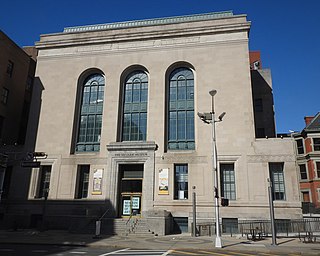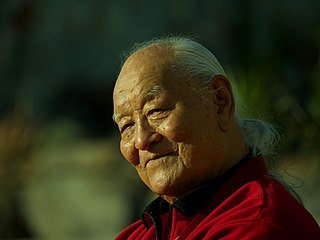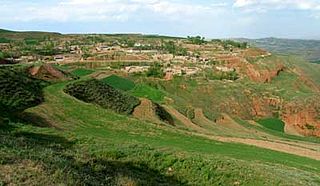
Tibet, or Greater Tibet, is a region in the western part of East Asia, covering much of the Tibetan Plateau and spanning about 2,500,000 km2 (970,000 sq mi). It is the homeland of the Tibetan people. Also resident on the plateau are some other ethnic groups such as the Monpa, Tamang, Qiang, Sherpa and Lhoba peoples and, since the 20th century, considerable numbers of Han Chinese and Hui settlers. Since the annexation of Tibet by the People's Republic of China in 1951, the entire plateau has been under the administration of the People's Republic of China. Tibet is divided administratively into the Tibet Autonomous Region, and parts of the Qinghai, Gansu, Yunnan and Sichuan provinces. Tibet is also constitutionally claimed by the Republic of China as the Tibet Area since 1912. Tibet is the highest region on Earth, with an average elevation of 4,380 m (14,000 ft). Located in the Himalayas, the highest elevation in Tibet is Mount Everest, Earth's highest mountain, rising 8,848 m (29,000 ft) above sea level.

The Panchen Lama is a tulku of the Gelug school of Tibetan Buddhism. The Panchen Lama is one of the most important figures in the Gelug tradition, with its spiritual authority second only to the Dalai Lama. Along with the council of high lamas, he is in charge of seeking out the next Dalai Lama. Panchen is a portmanteau of Pandita and Chenpo, meaning "great scholar".

Chökyi Gyalpo, also referred to by his secular name Gyaincain Norbu or Gyaltsen Norbu, is considered the 11th Panchen Lama by the government of the People's Republic of China (PRC). He is also the vice president of the Buddhist Association of China. Gyalpo is considered by critics to be a proxy of the Chinese government.

Emmen is a municipality and town of the province of Drenthe in the northeastern Netherlands.

The Newark Museum of Art, formerly known as the Newark Museum, in Newark, Essex County, New Jersey is the state's largest museum. It holds major collections of American art, decorative arts, contemporary art, and arts of Asia, Africa, the Americas, and the ancient world. Its extensive collections of American art include works by Hiram Powers, Thomas Cole, John Singer Sargent, Albert Bierstadt, Frederick Church, Childe Hassam, Mary Cassatt, Edward Hopper, Georgia O'Keeffe, Joseph Stella, Tony Smith and Frank Stella.

Namkhai Norbu was a Tibetan Buddhist master of Dzogchen and a professor of Tibetan and Mongolian language and literature at Naples Eastern University. He was a leading authority on Tibetan culture, particularly in the fields of history, literature, traditional religions, and Traditional Tibetan medicine, having written numerous books and scholarly articles on these subjects.

The 11th Panchen Lama controversy centers on the 29 year-long enforced disappearance of Gedhun Choekyi Nyima, and on the recognition of the 11th Panchen Lama. The Panchen Lama is considered the second most important spiritual leader in Tibetan Buddhism after the Dalai Lama. Following the death of the 10th Panchen Lama, the 14th Dalai Lama recognized Gedhun Choekyi Nyima in 1995. Three days later, the People's Republic of China (PRC) abducted the Panchen Lama and his family. Months later, the PRC chose Gyaincain Norbu as its proxy Panchen Lama. During the traditional search process led by Chadrel Rinpoche, he indicated to the Dalai Lama that all signs pointed to Gedhun Choekyi Nyima, while the Dalai Lamas and Panchen Lamas recognize each other's incarnations. The PRC had established its own search committee, which included Chadrel Rinpoche and other monks, and wanted to use a lottery system referred to as the Golden Urn. Neither Gedhun Choekyi Nyima nor his family have been seen since the abduction. Chadrel Rinpoche was also arrested by Chinese authorities the day of the abduction, as were other people.
This is a list of topics related to Tibet.

Taktser or Tengtser or Hongya Village is a village in Shihuiyao Township, Ping'an District, Haidong, in the east of Qinghai province, China. Tibetan, Han and Hui Chinese people populate the village which is notable as the birthplace of the 14th Dalai Lama, Tenzin Gyatso.

Thubten Jigme Norbu, recognised as the Taktser Rinpoche, was a Tibetan lama, writer, civil rights activist and professor of Tibetan studies and was the eldest brother of the 14th Dalai Lama, Tenzin Gyatso. He was one of the first high-profile Tibetans to go into exile and was the first to settle in the United States.

The Tibetan Institute of Performing Arts (TIPA) was founded by Tenzin Gyatso, the 14th Dalai Lama on reaching McLeod Ganj, Himachal Pradesh, India in exile from Tibet in August 1959. It was then called Tibetan Music, Dance and Drama Society, which was one of the first institutes set up by the Dalai Lama, and was established to preserve Tibetan artistic heritage, especially opera, dance, and music.

The Ming dynasty considered Tibet to be part of the Western Regions. While the Ming dynasty at its height had some degree of influence in Tibet, the exact nature of their relations is under dispute by modern scholars. Analysis of the relationship is further complicated by modern political conflicts and the application of Westphalian sovereignty to a time when the concept did not exist. The Historical Status of China's Tibet, a book published by the People's Republic of China, asserts that the Ming dynasty had unquestioned sovereignty over Tibet by pointing to the Ming court's issuing of various titles to Tibetan leaders, Tibetans' full acceptance of the titles, and a renewal process for successors of these titles that involved traveling to the Ming capital. Scholars in China also argue that Tibet has been an integral part of China since the 13th century and so it was a part of the Ming Empire. However, most scholars outside China, such as Turrell V. Wylie, Melvyn C. Goldstein, and Helmut Hoffman, say that the relationship was one of suzerainty, Ming titles were only nominal, Tibet remained an independent region outside Ming control, and it simply paid tribute until the Jiajing Emperor, who ceased relations with Tibet.

Lodi Gyaltsen Gyari Rinpoche, Kasur Lodi Gyari or "as he is universally known to the Tibetan-speaking world, Gyari Rinpoche" was a Tibetan politician, and journalist who served as the 14th Dalai Lama's special envoy to the United States. Exiled to India in 1959, he was also the executive chairman of the International Campaign for Tibet.

Tenzing Sonam is a Tibetan film director, writer and essayist based in Dharamshala. He works through his production company, White Crane Films, which he runs with his partner, Ritu Sarin.
Martin Brauen is a cultural anthropologist from Bern, Switzerland who specialises in Tibet, the Himalayas and history of religions.

The Tibet Museum is the official museum of the Central Tibetan Administration's Department of Information and International Relations and is located IN CTA complex in T building, in the Dharamshala suburb of McLeod Ganj. The Tibet Museum aims to disseminate knowledge of Tibetan history and culture while raising awareness of the occupation of Tibet and the ongoing human rights abuses and environmental destruction committed by CCP China. Established in 1998, the Tibet Museum now has a collection comprising over 30,000 photographs, day to day life objects, a traveling exhibition, and a permanent exhibition that tell about Tibet idintity by telling story through culture, history and struggle. Mainly new museum space exhibition title is I am Tibetan, this is my story which exhibition divided into 10 section each has cover Tibet identity and struggle.

Tashi Tsering also called Tashi Tsering Josayma; born in 1960, is a Tibetan tibetologist, historian and writer.

Sonam Dolma Brauen is a Tibetan-Swiss contemporary painter and sculptor.

Tibet House US (THUS) is a Tibetan cultural preservation and education 501(c)(3) nonprofit founded in 1987 in New York City by a group of Westerners after the Fourteenth Dalai Lama, Tenzin Gyatso, expressed his wish to establish a cultural institution to build awareness of Tibetan culture.

The Amnye Machen Institute is based in Dharamshala working in the field of Tibetan studies. It began along liberal and humanist lines, focusing primarily on secular subjects with emphasis on the contemporary and the neglected aspects of Tibetan culture and history.


























